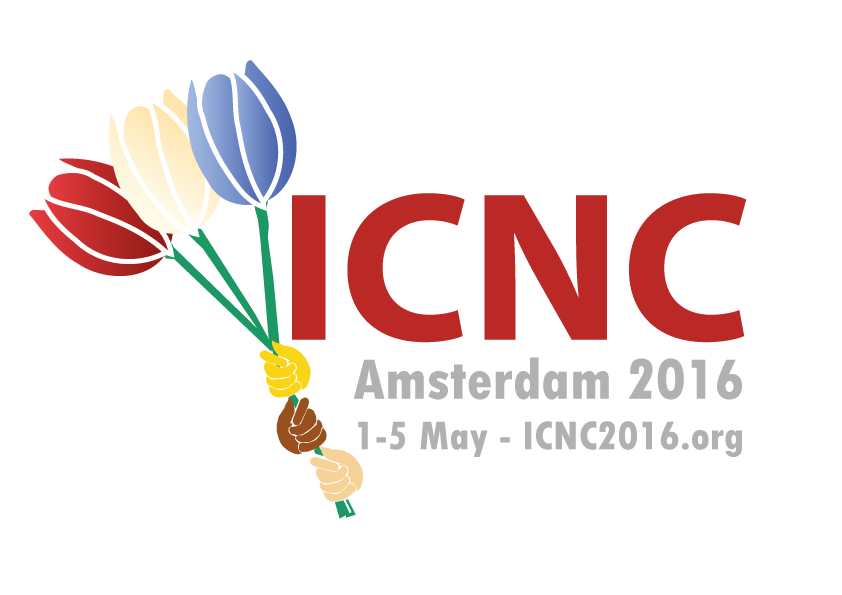
- Details
- ICNA
- News
- Hits: 627
We kindly invite you to submit proposals for lunch symposia, covering specialized child neurology topics, for the 14th ICNC 2016, in Amsterdam.
The congress theme is "Bridging Worlds; Child Neurology from a Global Perspective"
These symposia will enable a group of expert speakers to present current knowledge or new developments in well delineated areas of pediatric neurology in depth, reaching a targeted audience. Sessions will last 90 minutes, including a short introduction by the chairperson and 3 presentations – 20 minutes each – with ample time for interactive discussion. On choosing speakers, consideration should be given to geographical representation. Presentations are expected to comprise not only high-tech advances in the field, but also clinically relevant aspects of global importance. Proposals for symposia covering international collaborative research networks are particularly welcome.
Chairpersons should realize that the organizing committee unfortunately cannot waive registration fees, nor reimburse travel or accommodation expenses, for symposium speakers. It is therefore advised that proposers of symposia should check that speakers are willing to be put forward on this basis.
Please submit your proposal online (http://icnc2016.org), including the names and affiliations of chairperson(s) and three speakers, the title of their presentations, as well as a short summary of the session. The deadline for submission is August 1st 2015.
We look forward to your proposals and hope to welcome you all in Amsterdam, for the 14th ICNC, May 1st- 5th 2016.
On behalf of the organizing and scientific committees,
Michèl Willemsen
Chair of the ICNC 2016 scientific committee
Helen Cross
Chair of the ICNA scientific committee
Kees Braun
Chair of the ICNC 2016 organizing committee
Read More
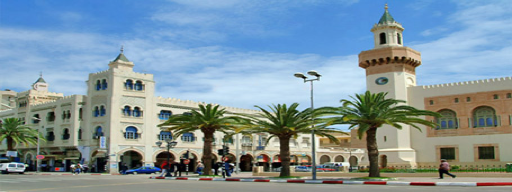
- Details
- ICNA
- News
- Hits: 739
ICNA Workshop and 14thTunisian Child Neurology Meeting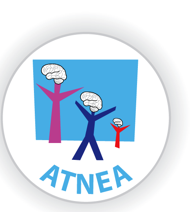
Sfax October, 9 and 10, 2015
We are delighted to invite you to the ICNA Workshop and 14thTunisian child neurology meeting, to be held in the city of Sfax in Borj Dhiafa Hôtel (Tunisia), on October, 9 and 10, 2015.
Programme Highlights
The themes of the meeting are "epilepsy in children" and "neuroinfectious diseases". The scientific program will cover topics relevant to pediatric epilepsy including basic sciences, neurophysiology, classification and good practice recommendations and the neurological manifestations and treatment of infectious diseases.
Program Organizers
Pr Chahnez Charfi Triki
Pr Jo Wilmshurst
Invited speakers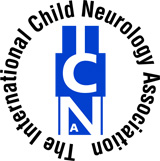
Banu Anlar (Turkey)
Helen Cross (UK)
Lieven League (Belgium)
Charles Newton (UK)
Prathiba Singhi (India)
Jo Wilmshurst (South Africa).
Language :
The congress will be conducted in English and French. No translation service will be available.
Important dates :
- Abstract Deadline: 31th July , 2015
- Early Registration Deadline: 15th August, 2015
Registration :
The meeting organizer will confirm all registrations by writing, only once full payment has been received. The registration fees are payable in Tunisian dinars (TND) and will include:
- Admission to all scientific sessions for the duration of the congress
- Congress bag
- Programme, abstract book
- Lunch and coffee
Registration fees:
- Before Saturday, August, 15, 2015
- Consultants 300TD
- Students/ Residents (with a letter of recommendation) 250DT
- After Saturday, August, 15, 2015
- Consultants 350TD
- Students/ Residents (with a letter of recommendation) 300DT
Registration procedures :
- The registration form must be completed in full and returned with proof of payment to the email: This email address is being protected from spambots. You need JavaScript enabled to view it. or fax : + 216 74 242 564. You will receive confirmation of registration within 72 hours of submitting your registration form and proof of payment.
 Click here to download the registration form31 KB
Click here to download the registration form31 KB
Cancellation of registration :
Notice of cancellation must be given in writing. Cancellation received by 31st of July 2015 will result in a 25% penalty. Any cancellation received after September, 1st, 2015 will not be eligible for a refund and will result in a 100% cancellation fees.
Personal insurance :
All delegates are responsible for their own travel insurance, medical insurance and cancellation fees.
Accommodation :
Borj Dhiafa (congress venue)
Rates for congress delegates:
Single standard 122 DT including breakfast
Double standard 142 DT including breakfast
Address : Route Soukra, Sfax Tunisia
Phone : + 216 74 676777
Fax : +216 74 677777
Email : This email address is being protected from spambots. You need JavaScript enabled to view it.
WEB : www.hotel-borjdhiafa.com
Single standard 105, 800 DT including breakfast
Double standard: 144.400 including breakfast
Address : RTE de SOUKRA KM0.5 3003 Sfax Tunisia
Phone : + 216 74 243333
Fax : + 216 74 245228
Email : This email address is being protected from spambots. You need JavaScript enabled to view it.
www.hotelsfax-syphax.com
Golden Tulip Sfax
Single standard: 169 DT including breakfast
Address : Avenue Habib Bourguiba BP 544 Sfax Tunisia
Mobile : + 216 22 680702
Phone : + 216 74 225700
Fax + 216 74 225563
Email : This email address is being protected from spambots. You need JavaScript enabled to view it.
www.goldentulipsfax.com
OliviersPalace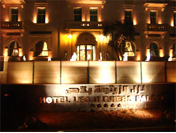
Single standard: 180 DT including breakfast
Double standard: 240DT including breakfast
Address : Hôtel les oliviers Palace Sfax- Golden Yasmin Hôtel
25 avenue Hédi Chaker 3000 Sfax Tunisia
Phone : +216 74 201999
Fax : +216 74 201888
Email : This email address is being protected from spambots. You need JavaScript enabled to view it.
Email : This email address is being protected from spambots. You need JavaScript enabled to view it.
www.goldenyasmin.com
Pacha Hotel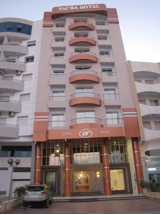
Single standard : 80 DT including breakfast
Double standard : 130 DT including breakfast
Address : Hôtel Pacha, angle avenue
Majida Boulila et route Lafrane
3000 Sfax Tunisia
Phone : + 216 74 464 000
Fax : +216 74 464 030
Email: This email address is being protected from spambots. You need JavaScript enabled to view it.
• For more information about Hotels in Sfax, please visit the website: www.Sfax - Federal Hotel Tunisie
Read More
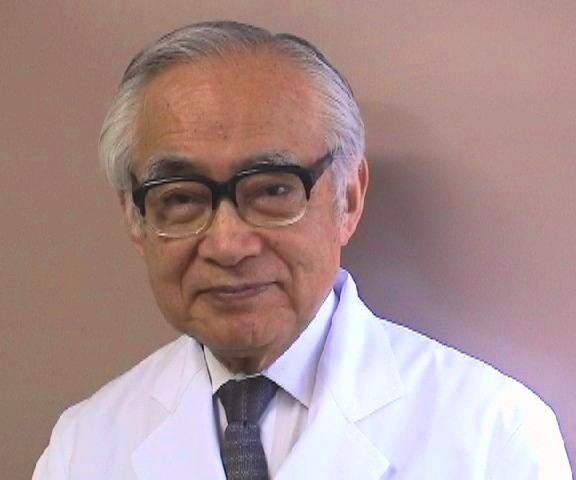
- Details
- Yoshiko Nomura
- News
- Hits: 668
Masaya Segawa, MD, PhD, one of the pioneers in Child Neurology, the director of Segawa Neurological Clinic for Children, passed away on December 14, 2014 at the age of 78 years and 6 months. He was born in Tokyo on June 4, 1936.
He graduated from the University of Tokyo, School of Medicine in 1962, receiving his MD degree, and received a PhD degree from the University of Tokyo, Graduate School of Medicine in 1970. He had post- graduate training and was a member of the house-staff in the Department of Pediatrics, University of Tokyo under Prof. Tadao Takatsu till 1973.
In the mid-1960s, it was the dawn of neurology in Japan. Neurological diseases in children were taken care of in the Department of Pediatrics. As a young pediatrician in that Unit at The University of Tokyo Hospital, Dr. Segawa was very much involved and extremely interested in the disorders of the nervous system in children and spent every day in the Outpatient clinic of the University of Tokyo Hospital from early morning to late evening seeing patients with neurological diseases coming from all over Japan. His ten years’ experience in the Department made Dr. Segawa confident that Child Neurology must be independent from General Pediatrics and focussed on neurological disorders.
In 1973, when he succeeded his father, Prof. Isao Segawa, the director of Segawa Children’s Hospital located in Ochanomizu, Tokyo, Dr. Segawa established the Segawa Neurological Clinic for Children on November 1, 1973. Since then, Dr. Segawa was Director of the Segawa Neurological Clinic for Children for 41 years 2 months till his death on December 14, 2014.
At this time, there were only three public institutes which had separate child neurology departments. Thus, the Segawa Neurological Clinic for Children was the first private child neurology clinic in Japan.
Dr. Segawa was of the 9th generation in the Segawa family. Early in the 18th century, Edo era, a forefather was said to be the first pediatrician in Japan. Dr. Segawa belonged to the 4th generation since Western medicine was introduced to Japan.
What Dr. Segawa aimed for in the Segawa Neurological Clinic for Children was to study the disorders starting in childhood, then through adulthood and even into older ages, that is to say ‘The Lifelong Neurology’.
Most of the neurological diseases were difficult to cure, and even controlling the pathophysiological processes was difficult. That is why Dr. Segawa believed in studying not only child neurology but also that knowledge of adult neurology, the neurosciences and basic sciences was mandatory to fully understand the neuropsychological disorders starting in childhood.
Dr. Segawa thought that observing the age-dependent changes of a given disorder and analyzing the differences of the clinical characteristics of the disorder starting at different ages were important in understanding the underlying pathophysiology of childhood-onset neurological disorders, which leads to the essential treatment.
This was the Goal of the Segawa Neurological Clinic for Children for 41 years 2months. Based on the above-mentioned pure motivation and enthusiasm, the activities of the Segawa Neurological Clinic for Children covered very busy clinical work, wide ranging clinical research and education.
Dr. Segawa was always the leader, mentor, colleague and friend of many physicians and researchers, but above all a very kind and thoughtful doctor for many patients visiting not only from all around Japan but also from abroad. He was a really hard worker and all his time was devoted to medicine.
His research covered a very wide range. His PhD thesis was on a type of congenital muscular dystrophy, which Dr. Segawa later proposed to name as Fukuyama type congenital muscular dystrophy. Dr. Segawa played another key role in the research on Fukuyama type congenital muscular dystrophy. He was following a patient who suffered from both Fukuyama type congenital muscular dystrophy and xeroderma pigmentosum. On the advice of Dr. Segawa, Dr. Toda studied the genetic information of this patient, discovered the linkage of Fukuyama type congenital muscular dystrophy and finally found the causative gene of Fukuyama type congenital dystrophy.
These are kinds of serendipity but such opportunities occur only to the prepared person. Dr. Segawa was such a person. Many times it has been said that the best teachers in medicine are the patients. The discovery of Segawa disease goes back to his days in Tokyo University Hospital. One day in 1970, a girl accompanied by her mother visited Dr. Segawa’s Out-patients clinic. She was suffering from walking difficulty which worsened toward the evening. The mother told Dr. Segawa that the only good thing about this girl was that, in spite of this motor symptom, she did not move much during sleep so that the mother did not need to go to her bedroom to see if she was covered by her blanket This incidental remark of the mother made Dr. Segawa think about the role of sleep. He began studying polysomnography of the girl and other patients with the same disorder, which led him to understand that decreased activity of the dopamine system in the striatum is the essential pathophysiology of Hereditary Progressive Dystonia with marked diurnal fluctuation (HPD). Later it was called Segawa disease. The diurnal fluctuation and progressive course of this disorder were prominent in childhood, and the characteristics of this disorder were also analyzed by sleep analysis and basic science research.
It was the time when l-Dopa was just beginning to be used for the treatment of Parkinson disease. As one of the pupils of Prof. Narabayashi, Dr Segawa learned the differences of muscle tone in Parkinson disease and dystonia, and his idea of trying l-Dopa in HPD patients was the very epoch-making moment in the treatment of Segawa disease. Further extensive clinically oriented studies and collaborative research with many colleagues enabled Dr. Segawa to clarify the pathophysiological mechanism, biochemical abnormalities and finally led to the discovery of the causative gene, GTP cyclohydrolase1 gene in 1994, in collaboration with Dr. Ichinose who sequenced the gene.
After the gene was found, Dr. Segawa proposed two clinical types of Segawa disease, the postural type and the action type. He suggested the former is hypokinetic dystonia and the latter is hyperkinetic dystonia involving different neuronal pathways.
His research covered more fields: the discovery of the highest frequency of the childhood myasthenia gravis in Japan, and also proposing the clinical subtype of ‘latent generalized type’. The particular HLA association of Japanese childhood myasthenia gravis was also found by Dr. Segawa and associates.
Regarding the research on Rett syndrome, it was in May of 1982, when he was invited by Prof. Bengt Hagberg to attend the 100th anniversary meeting of the Institute in Göteborg, where the symposium on Rett syndrome was held. I vividly remember the international telephone call from Dr. Segawa who told me that four particular patients we had been following had Rett syndrome. In the autumn of the same year, I visited Prof. Rett in Vienna. Based on our clinical research and the age-dependent changes of the symptoms, we first proposed that Rett syndrome is a particular developmental disorder. It took several years till Prof. Hagberg agreed with what Dr. Segawa and I proposed, i.e. that Rett syndrome is a developmental disorder. Now, nobody disagrees.
Regarding the Tourette syndrome (TS), since the establishment of Segawa Neurological Clinic for Children many patients began to visit the clinic seeking the biological bases of TS. It was the time when TS was thought to be due to environmental factors or stresses. Dr. Segawa and I, together with other international groups involved in active research on TS. proposed that TS was a developmental disorder of the dopamine system at the terminal of the nigro-striatal DA system. Thus, TS research is also one of the important interests of the Segawa Neurological Clinic for Children.
Dr. Segawa also engaged actively on the research and management of autism.
Dr. Segawa’s original study of sleep in Segawa disease suggested that the analysis of sleep components enabled clarification of the function of the brainstem and midbrain noninvasively and is on-going at the neuron level.
He also pointed out the importance of the function of locomotion playing an essential role for the development of the brain.
Dr. Segawa also taught that the studies of the diseases of children can give clues to understand the normal brain. This unique idea of Dr. Segawa extended to the research on the ‘neurosciences and education’. He organized many national conferences, inviting clinicians and basic scientists for discussion of the various topics. It was his belief that these meetings are important to both clinicians and basic scientists to learn new things.
Dr. Segawa organized the International Rett syndrome Congress in Karuizawa Japan in 2000 as the Congress chairman. That was a truly successful meeting involving clinicians, basic scientists and patient associations gathered from all over the world.
He is the author and co-author of over 700 Japanese and English papers from 1965 to 2014. His last publication was ‘Genetics and Pathophysiology of Primary Dystonia with Special Emphasis on DYT5 and DYT1’.
He was a member of many national and international medical associations, and played important roles in many of them. In particular, he was an important board member of the International Child Neurology Association since 2002. He especially enjoyed participating in the teaching programs for young colleagues in many countries under the ICNA’s leadership.
His warm feeling of friendship to all his friends around the world was overwhelming.
For his outstanding lifework, Dr. Segawa held several awards, including the Emil Becker Prize 2012 from Gesellschaft für Neuropädiatrie, the Japanese Pediatric Society in 2011, the Congress Award of the 15th International Congress on Parkinson’s Disease and Movement Disorders and the Best Child Neurologist Award given at the International Child Neurology Congress 2010.
He also contributed to many National and International Associations for the support of patients with conditions such as muscular dystrophy, myasthenia gravis, Rett syndrome, Tourette syndrome and dystonia.
He was also a Special Appointed Professor at the Dokkyo University, a visiting professor at the Toho School of Medicine and an active lecturer at Juntendo and Iwate University Schools of Medicine.
Dr Segawa supported the Segawa Program for many years by donating his own money to the Japanese Society of Child Neurology to facilitate inviting speakers to the annual meetings for the purpose of letting young child neurologists to meet and to discuss with prominent teachers and friends from abroad.
He was always a quiet, friendly and fair person with a wonderful smile. His friendship with many colleagues extended widely, both nationally and internationally.
His challenges in so many fields continued for all his life. The last challenge began in the spring of 2014. He was found to have adult type Burkitt lymphoma. It is the most aggressive, malignant and rare type of lymphoma. According to the published reports, the cure rate is very limited particularly in patients over 60 years.
Dr. Segawa, however, read papers on Burkitt lymphoma which his friends from abroad and I searched for. He wanted to pursue all possible treatments, even experimental treatment as a physician patient. However, it must be his great regret that the wishes were not heard.
Dr. Segawa accomplished very much during his life of 78 years, but till his last moment, he still had ideas on much unfinished work. He left us to learn from him and to follow what he aimed for. He gave us the hope and dream to make further progress. He will be remembered and missed for a long time with respect, affection, and LOVE.
Yoshiko Nomura, M.D., PhD
Previously: Assistant Director
Segawa Neurological Clinic for Children
Tokyo Japan
Currently:
Representative
Yoshiko Nomura Child Neurology Consulting
Read More
- Details
- Isabelle Rapin
- News
- Hits: 791
With the sad news in ICNAPedia of the passing of Dr Masaya Segawa, close upon earlier news of those of Dr Yukio Fukuyama’s and one of ICNA’s mentors, Dr Heinz Prechtl’s, ICNA has lost two more among the dwindling number of its founding members. As a (still) survivor, let me honor their fundamental contributions to our field, and allow me a few personal memories of Drs Fukuyama and Segawa dating back to Toronto 1975. Both these Japanese colleagues epitomize the clinician-scientist, today an endangered species because their important discoveries came from close observation of their patients, Dr Fukuyama’s from the vantage point of academe—The Women’s Medical College in Tokyo, Dr Segawa’s from the private practice of neurology with the eye of a researcher in whom every new patient provides the potential opportunity for a new discovery.
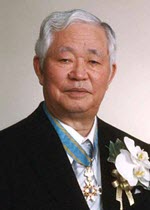 Dr Yukio FukuyamaToday’s child neurologists all know of Dr Fukuyama because of his description of the Fukuyama muscular dystrophy1, perhaps the first recognized muscle/brain disease. They will be aware of his multiple contributions to childhood epilepsy, in particular infantile spasms, and to many other neufologic disorders of children. They may not appreciate, if they come from the West, that Dr Fukuyama was the father of child neurology first in Japan, then Asia. They are unlikely to be aware that he founded the pioneer Japanese journal of child neurology, then Brain and Development, which he edited for many years. His modesty belied his powerful world wide influence for which we are all grateful.
Dr Yukio FukuyamaToday’s child neurologists all know of Dr Fukuyama because of his description of the Fukuyama muscular dystrophy1, perhaps the first recognized muscle/brain disease. They will be aware of his multiple contributions to childhood epilepsy, in particular infantile spasms, and to many other neufologic disorders of children. They may not appreciate, if they come from the West, that Dr Fukuyama was the father of child neurology first in Japan, then Asia. They are unlikely to be aware that he founded the pioneer Japanese journal of child neurology, then Brain and Development, which he edited for many years. His modesty belied his powerful world wide influence for which we are all grateful.
My first encounter with Dr Segawa was the five abstracts he submitted to the program committee of the first International Child Neurology Congress in 1975. What to do with such a prolific member whose name was new to me? It is to ICNA members that he presented the first report of dystonia with diurnal fluctuations2, now DTY 5a or Segawa disease. It is Dr Ouvrier from Australia who put it on the world map with his 1978 report of 3 cases in the 1978 Annals of Neurology3, in which he credits Dr Segawa with his 1976 princeps report of 9 Japanese cases, likely those he told us about in Toronto. A dramatically treatable formerly disabling neurologic disorder: what a unique and magnificent contribution! Dr Segawa attended every ICNC and many neurology meetings in the USA and elsewhere, often with his charming colleague Dr Yoshiko Nomura.
Did you know that, a long-time scholar of brainstem and sub-cortical nuclei and their neurotransmitters, Dr Segawa had long-standing novel ideas about the 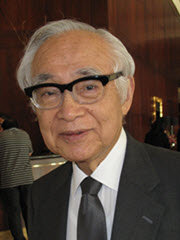
When I was in training and a fledgling teacher of child neurology, we were all imbued with Dr Prechtl from Groningen in the Netherlands’ observations of the complex behavioral repertoire of the newborn, and later the fetus. He came to his pioneering research from having studied ethology with his award-winning mentor, Nobelist Konrad Lorenz, famous for his studies of maternal imprinting in newly-hatched goslings. Prehtl’s work in human neonates spawned neonatal child neurologists in Paris, London, Canada, and elsewhere to realize that babies are not insensate blobs and deserve respect and protection from pain.
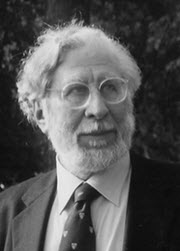 Heinz FR PrechtlIt is Dr Prechtl—whom I never met—who spurred me to bring my 4 week old younger son Peter, dressed in a red terry jumpsuit, to demonstrate to the 2nd year class of Einstein students the behavioral repertoire, including supported ambulation, of the infant. ICNA has been blessed from the start—and still is—with outstanding clinician-investigators. May the deluge of unyielding computerized reports that dictate what they are to see not kill the desire of young doctors to observe and record what the clinic privileges them to observe on their own and share with colleagues around the world.
Heinz FR PrechtlIt is Dr Prechtl—whom I never met—who spurred me to bring my 4 week old younger son Peter, dressed in a red terry jumpsuit, to demonstrate to the 2nd year class of Einstein students the behavioral repertoire, including supported ambulation, of the infant. ICNA has been blessed from the start—and still is—with outstanding clinician-investigators. May the deluge of unyielding computerized reports that dictate what they are to see not kill the desire of young doctors to observe and record what the clinic privileges them to observe on their own and share with colleagues around the world.
As well known, many of the truly revolutionary scientific discoveries, from Galen to Lister, Semmelweiss, Pasteur, and others were the gifts of individual patients to their astutely observing caring physician, not the statistical products of meta-analyses of compiled international case series, or the discovery of the -nth mutation increasing slightly the risk of some behaviorally-defined syndrome, however important for treatment such endeavors they may be.
Author:
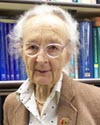 |
Isabelle Rapin This email address is being protected from spambots. You need JavaScript enabled to view it.This email address is being protected from spambots. You need JavaScript enabled to view it. +1 845 757 5770 4905 Route 9G, Tivoli NY 12583, USA |
Ref:
1. Y. Fukuyama, M. Kawazura, H. Haruna. A peculiar form of congenital progressive muscular dystrophy. Report of fifteen cases Paediatr Univ Tokyo, 4 (1960), pp. 5–8
2. Segawa M, Hosaka A, Miyagawa F, Nomura Y, Imai H. Hereditary progressive dystonia with marked diurnal fluctuations. Adv Neurol 1976;14:215–33
3. Ouvrier, R. A. (1978), Progressive dystonia with marked diurnal fluctuation. Ann Neurol., 4: 412–417. doi: 10.1002/ana.410040505
Read More
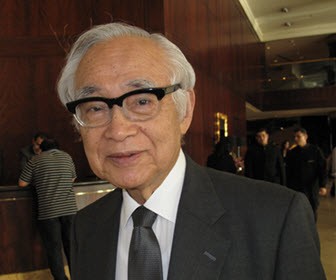
- Details
- ICNA
- News
- Hits: 3207
We are deeply saddened to report that Professor Masaya Segawa, MD, PhD, the director of Segawa Neurological Clinic for Children, Tokyo, Japan, took his last breath at 18:15 on December 14, 2014, at age of 78 year-old from a disease to which he fought till the end courageously. His extreme courage is based on his belief as a physician, sincere thought for life and his noble heritage.
He was an exceptionally hard worker, and a man with the kindness, warm heart,a humor and a beautiful smile. His contribution in the medical field and warm friendship to all of us will be remembered for a long time.
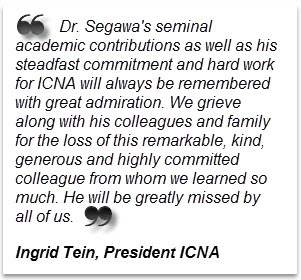 Dr Segawa's discovery of the condition "Hereditary progressive dystonia with marked diurnal fluctuation" in 19761, stands among the most important modern contributions to child neurology. Dr. Segawa,Dr. Yoshiko Nomura, and their colleagues have made many more important contributions to child neurology including sleep disorders, autism and movement disorders.
Dr Segawa's discovery of the condition "Hereditary progressive dystonia with marked diurnal fluctuation" in 19761, stands among the most important modern contributions to child neurology. Dr. Segawa,Dr. Yoshiko Nomura, and their colleagues have made many more important contributions to child neurology including sleep disorders, autism and movement disorders.
Dr Masayo Segawa (1882-1962) who made the important observation2 that neurological symptoms in breast-fed infants disappeared with mixed feeding, probably one of the earliest reports on "infantile beriberi" was the grandfather of Dr Masaya Segawa. Dr. Segawa’s great-grandfather, Dr. Masatoshi Segawa (1856-1920), was the Dean of Miyagi Medical School, a Professor at Chiba Medical School, and the founder of Koutou Hospital for children in 1899 and of Segawa Children’s Hospital at Ochanomizu in 1905. Dr. Masaya Segawa’s father, Dr. Isao Segawa (1905- 1984) was also a distinguished paediatrician3.
In 2010, the ICNA conferred Honorary Membership on Dr Masaya Segawa and he has been a member of the ICNA Executive Board since 2004
Yoshiko Nomura, MD, PhD
Assistant Director
Segawa Neurological Clinic for Children
2-8 Surugadai Kanda Chiyodaku
Tokyo 101-0062 Japan
TEL 81-3-3294-0371
FAX 81-3-3294-0290
E-mail This email address is being protected from spambots. You need JavaScript enabled to view it.
E-mail This email address is being protected from spambots. You need JavaScript enabled to view it.
References:
1. Segawa M, Hosaka A, Miyagawa F, Nomura Y, Imai H. Hereditary progressive dystonia with marked diurnal fluctuations. Adv Neurol 1976;14:215–33
2. Segawa Y. Nervous symptoms in a breast-fed infant which disappeared with mixed feeding. Zika-Zasshi 1916;189
3. Ouvrier RA. Japanese contributions to child neurology - an international perspective. Brain Dev. 2012 Jan;34(1):2-7
- ILAE-CAA Epilepsy Conference March 24-25 2015 Durban
- Canadian/international research project on neurologists' perceptions about the use of genetic/genomic tests in their clinical practice
- Acute Neurologic Illness with Focal Limb Weakness of Unknown Etiology in Children
- 11th Pan Arab Child Neurology Conference (PACNA)
